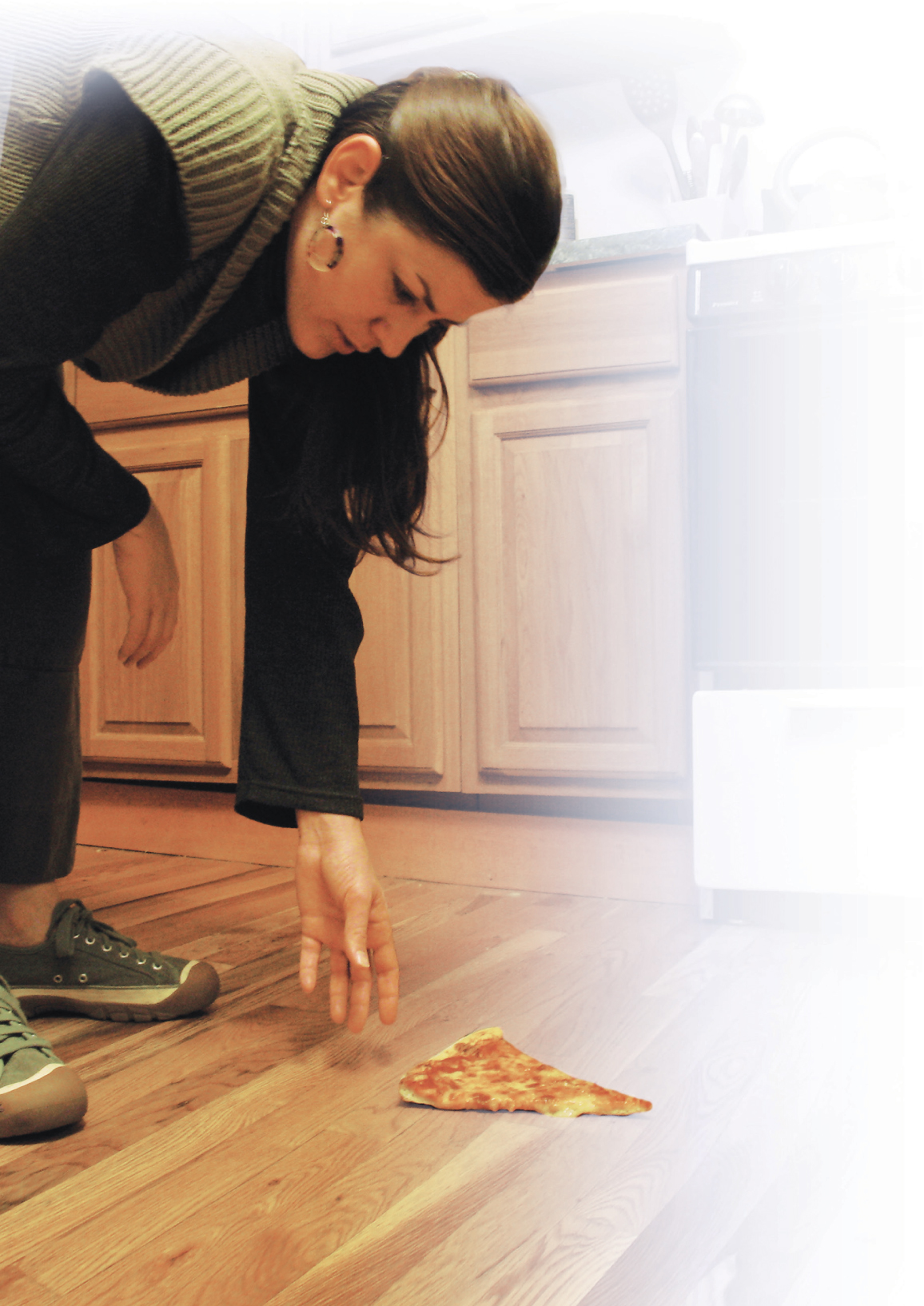KNOWLEDGE YOU CAN USE



In 2007, two students at Connecticut College decided to test the “five-
Question 13.7
Q: Is the five-
Question 13.8
Q: Should we worry less about bacterial contamination of food? This question is a serious one and warrants more study. Each year in the United States there are more than 76 million cases of illness caused by contaminated food, including more than 5,000 that are fatal.
Question 13.9
Q: Scientific method and drawing conclusions: can you generalize from a small number of observations to all possible situations? In the Connecticut College study, the students examined two food types, dropped in just two locations, and onto surfaces with unknown concentrations of bacteria. In another study, published in the Journal of Applied Microbiology, researchers focused on Salmonella bacteria. Because it has been documented that bacteria can survive on clothes, hands, sponges, cutting boards, and utensils for several days, the researchers decided to drop food on surfaces known to be covered in bacteria.
Question 13.10
Q: Which factor is more important for dropped food: location or duration? Armed with slices of bologna and pieces of bread, the researchers found that when dropped on surfaces covered with Salmonella and left for a full minute, both types of food took up 1,500–
A grubby conclusion: It’s probably safe to say that if you’re in the Connecticut College cafeteria, you can eat your dropped food as long as you pick it up quickly. But for all other situations, a bit more caution is advised—
565